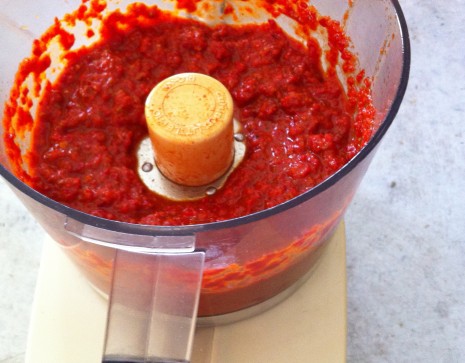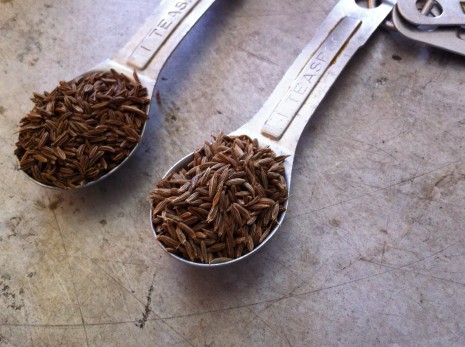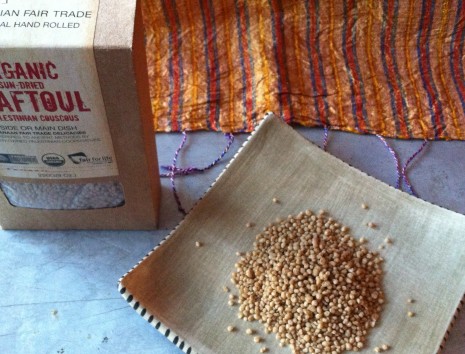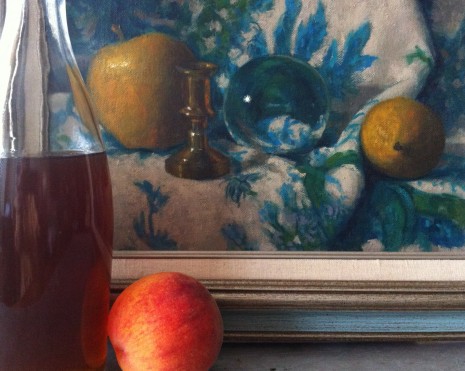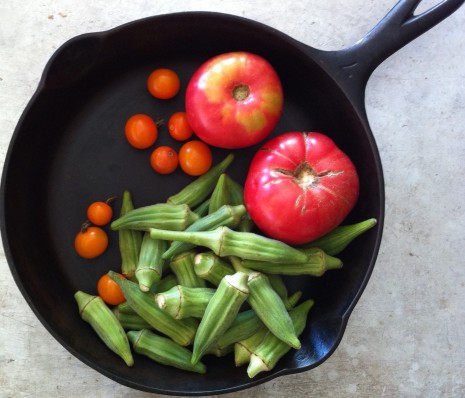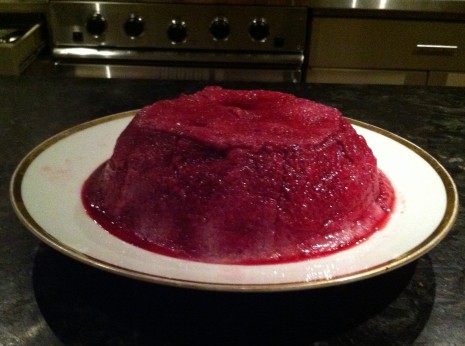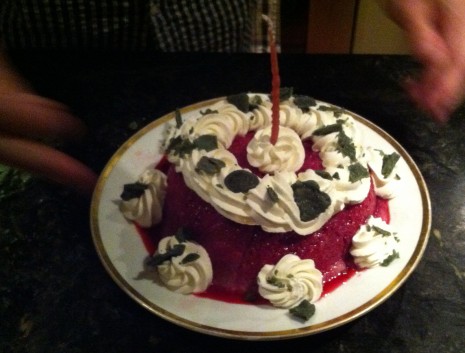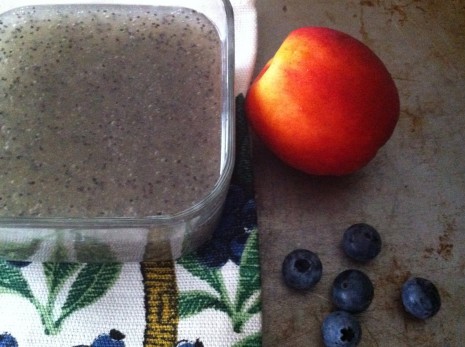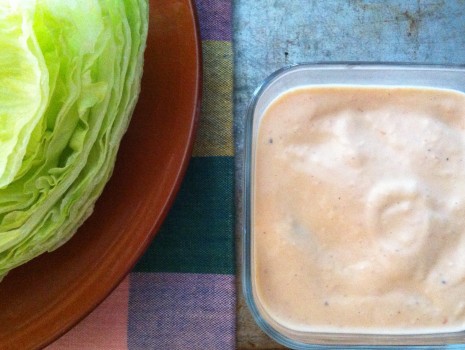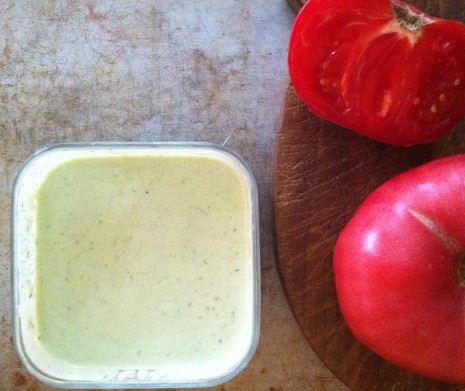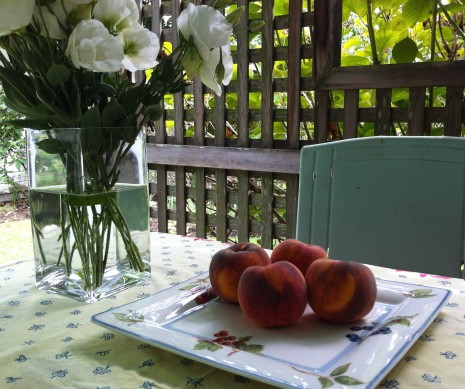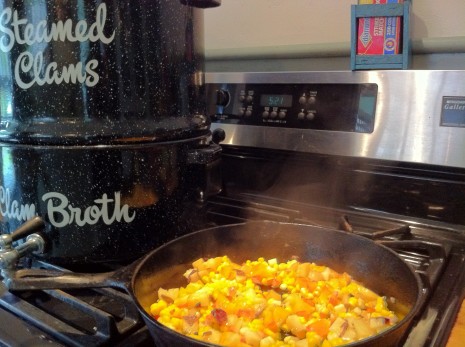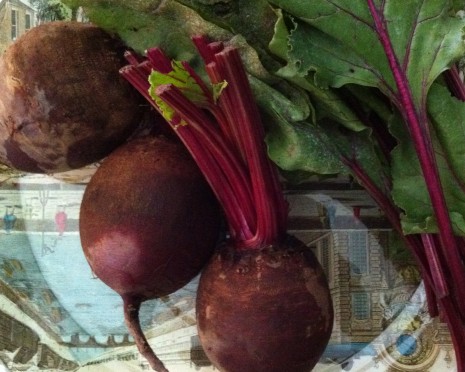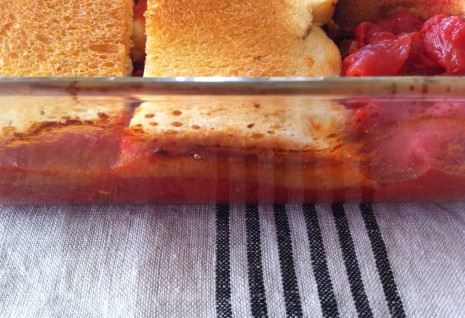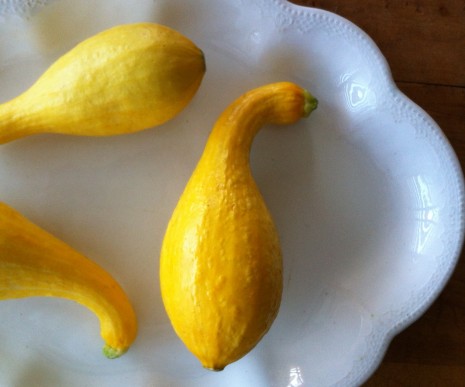HARISSA MORO
Harissa—a blend of hot chiles, garlic, olive oil, and spices—is an essential condiment and flavor base in Tunisia and elsewhere in North Africa. It is is eaten in or alongside couscous, stews, egg dishes, and briks, or “stuffed parcels” made from the crisp, thinner-than-thin pastry called warka. It’s no surprise that there are as many recipes for harissa as there are spice merchants in the souks.
Perhaps the most surprising ingredient in harissa—to most Americans, at any rate—is coarsely ground caraway seeds. We tend to pigeonhole the warm, bittersweet spice as a northern or central European flavoring for stews, cabbage dishes, breads, sweets, and spirits such as aquavit and Kümmel.
But caraway (Carum carvi) likely originated in Central Asia “through to North Africa,” explained Clifford Wright, author of the sweeping, scholarly A Mediterranean Feast. “Within North Africa, it is most popular in Tunisia.” It’s related to cumin (Cuminum cyminum), and the two look very much alike. When you compare the umbellifers side by side, though, caraway (below photo, at left) is darker than cumin (at right).
Harissa appeared on my radar back in the late 1980s, when an ethnographer friend brought me a funky little pot of it from Morocco. These days, harissa is easy enough to buy in the States; brands to look for include M’hamsa (which means “by hand” in Arabic), Mustapha’s, and DEA. I was perfectly happy with the store-bought stuff until a few years ago, when I discovered that homemade harissa was well within the grasp of anyone with access to dried guajillo and New Mexican chiles (available at Latin markets and many supermarkets) and a recipe from Cliff Wright or Paula Wolfert. I never looked back.
Last weekend, when I was on the prowl for something different to do with a roast chicken. I found myself thinking of the harissa-marinated bird I’d devoured about ten years ago at the restaurant Moro, in Exmouth Market, London. Chef-owners Sam(uel) and Sam(antha) Clark are as knowledgeable as they are passionate about the intense, intricate flavors of Spain, North Africa, and the eastern Mediterranean. They are master interpreters of the romance and tradition of that food, and Moro: The Cookbook soon found a place in my library.
Sam and Sam make their harissa with fresh chiles instead of dried, which sounded not just intriguing, but a heaven-sent solution to what was crowding the vegetable crisper—a bag of long red medium-hot chiles from a neighbor’s garden. Roasted piquillo peppers (available at Whole Foods and other supermarkets as well as online sources like La Tienda) and sweet smoked Spanish paprika (I found La Chinata, my favorite brand, at Zingerman’s) add finesse and depth.
One ingredient that’s listed as optional is black cumin. There are a few spices that are sometimes given this name, but what the Sams mean is also known as royal cumin, shah jeera, or kala jeera, and found at Kalustyan’s and other Indian markets. It’s a uncommon spice grown in Kashmir, northern Pakistan, and Iran and is used mostly in Moghul-style meat dishes. Its musky, herbal flavor would give harissa even more complexity, although it was absolutely delicious without it.
Harissa
Adapted from Moro: The Cookbook, by Sam and Sam Clark (Ebury Press, London, 2001)
250 g [about 9 ounces] long fresh red chiles
4 garlic cloves
Sea salt
3 heaped teaspoons coarsely ground caraway seeds
3 heaped teaspoons coarsely ground cumin seeds
1 level teaspoon ground black cumin seeds (optional)
100 g [about 3½ ounces] jarred piquillo peppers, or 1 large red bell pepper, roasted, peeled, and seeded
1 dessertspoon [about 1½ teaspoons] tomato purée or tomato paste blended with a little water
1 dessertspoon [about 1½ teaspoons] red-wine vinegar
2 level teaspoons sweet smoked Spanish paprika
6 tablespoons extra-virgin olive oil
1. It is advisable to wear rubber gloves when preparing the chiles. Slice the chiles in half lengthwise. Lay each chile, cut side up, on a cutting board, cut side up and gently scrape away the seeds and fleshy veins, discarding them. Roughly chop the chiles and transfer to a food processor. Add the garlic, a pinch of salt, and half of each the spices; process until smooth. Add the piquillos and process. It’s important that the paste is as smooth as possible.
2. Transfer to a mixing bowl. Now add the remaining ingredients—the rest of the spices, tomato purée, vinegar, paprika, and olive oil. Taste and season with more salt to balance out the vinegar. Harissa keeps well in the fridge, but be sure to cover it with a little olive oil to seal it from the air.
Now, about that Moro roast chicken: It really couldn’t be simpler. Generously rub the harissa all over the bird, season with s & p, and refrigerate it for a few hours. Roast the bird in a preheated 425°F oven until done, about 50 minutes to an hour, depending on the size of the bird. Transfer the chicken to a cutting board or platter to rest, loosely covered with foil. If you like, pour off most of the fat from the pan, add about ¼ cup water and a squeeze of lemon, and heat, scraping up the brown bits, to make a simple pan sauce.
Sam and Sam serve their roast chicken with tapas-style fried potatoes, but I was in the mood for large-grained pearled couscous. Most supermarkets carry Near East brand, but for the past few months I’ve been smitten with an artisanal product called Maftoul, from Palestine. Like M’hamsa, from Tunisia, it’s available at Whole Foods, but I find the M’hamsa a trifle salty. No matter what kind of couscous you choose, it’s always a good idea to rinse the wheat granules well before cooking.
Posted: September 25th, 2012 under cookbooks, early autumn, people + places, recipes, restaurants.
Comments: none

